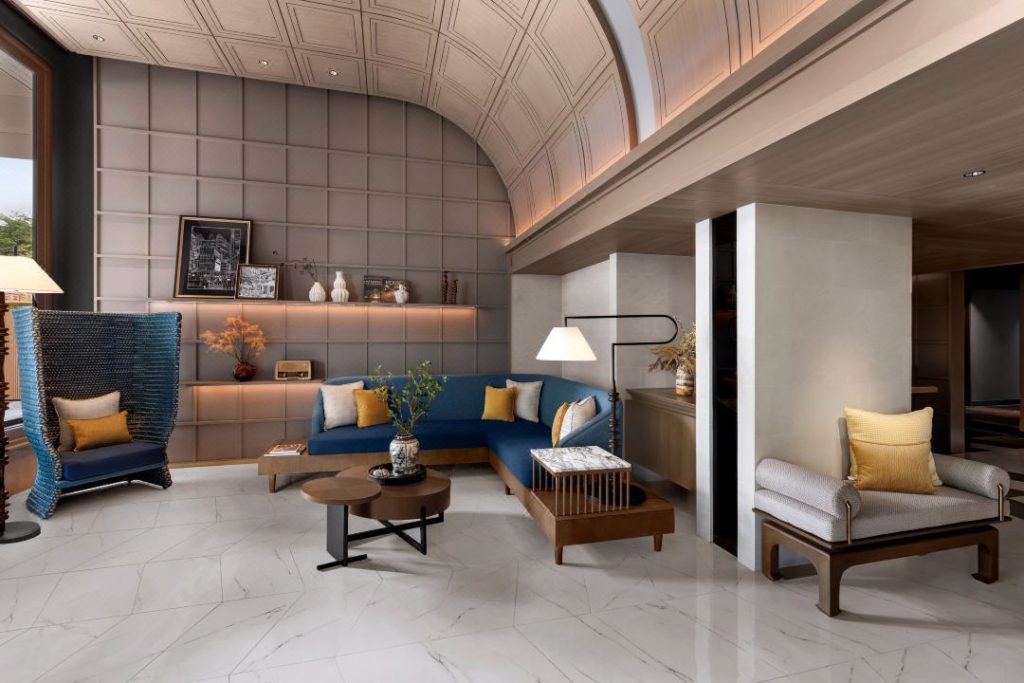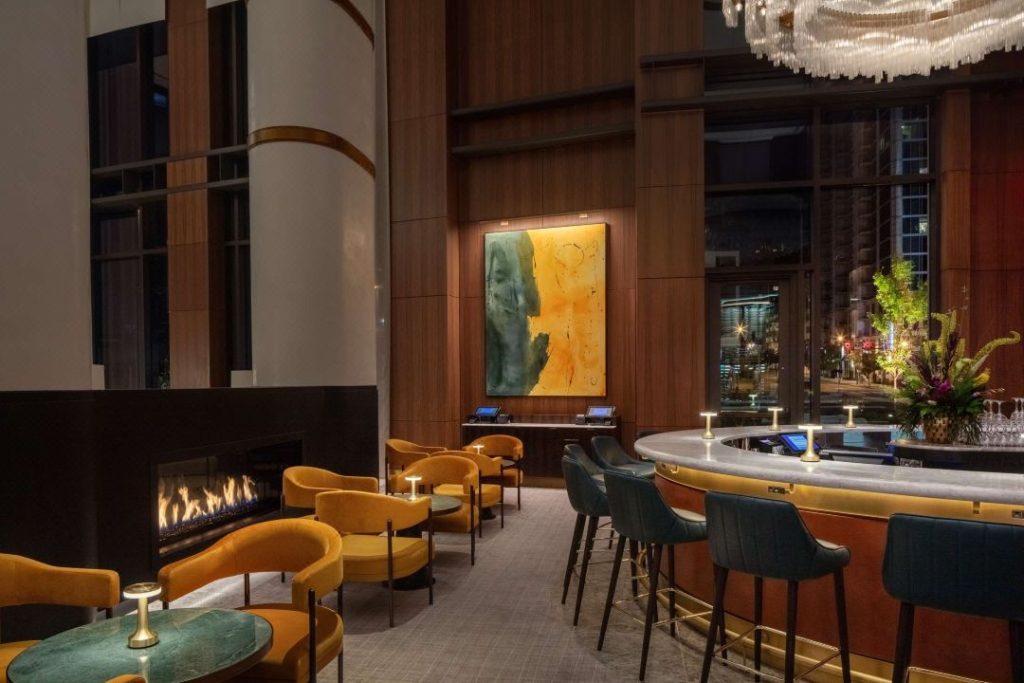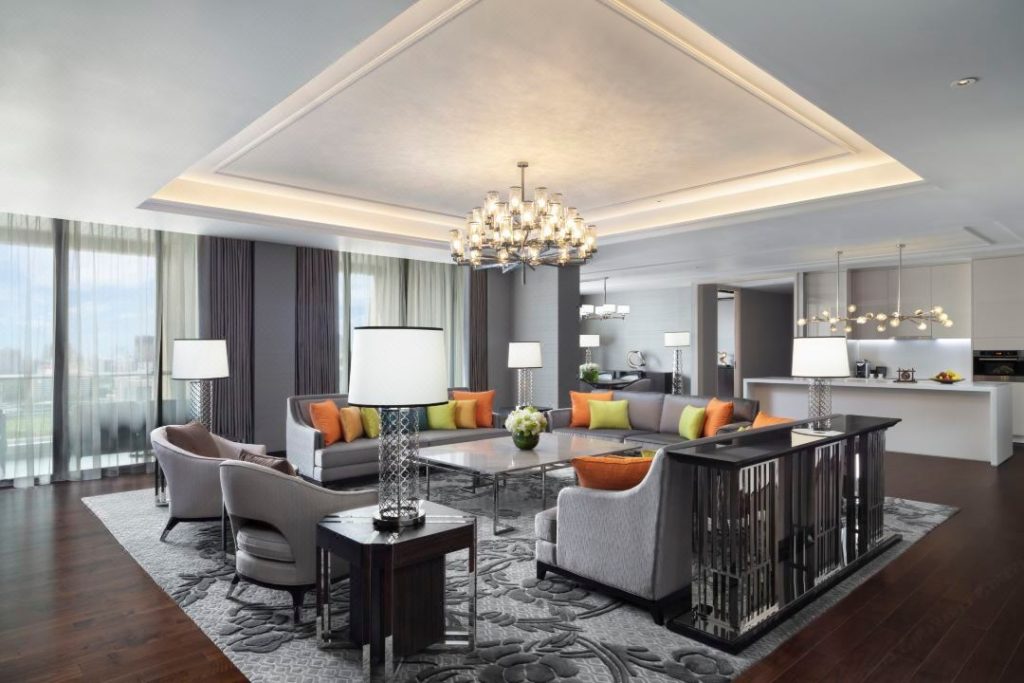Creating a memorable guest experience begins long before a traveler steps foot into their hotel room. It starts the moment they enter the hotel’s public areas, where the ambiance, comfort, and functionality of the space set the tone for their stay. Designing welcoming spaces in hotels requires meticulous attention to detail, particularly in the selection of furniture.
From the lobby to the lounge, the restaurant to the rooftop terrace, each area presents an opportunity to leave a lasting impression on guests. This guide aims to delve into the nuances of hotel public area furniture, exploring the importance of design, functionality, and sustainability in crafting spaces that resonate with guests and elevate their overall stay experience.

Introduction to Hotel Public Areas
Hotel public areas serve as the first point of contact for guests, setting the stage for their entire stay experience. These spaces encompass the lobby, corridors, lounges, restaurants, bars, and recreational areas, acting as hubs of activity and relaxation within the hotel. The design and ambiance of these areas play a crucial role in shaping guests’ perceptions of the establishment, influencing their overall satisfaction and likelihood of return visits.
With the rise of social media and online reviews, hoteliers recognize the significance of creating visually appealing, functional, and inviting public spaces to attract and retain guests in an increasingly competitive market.
Importance of Furniture in Hotel Public Areas
Furniture serves as the backbone of hotel public areas, contributing significantly to the comfort, functionality, and aesthetic appeal of these spaces. Whether guests are waiting in the lobby, enjoying a meal in the restaurant, or relaxing in the lounge, the quality and design of the furniture directly impact their experience. Comfortable seating encourages guests to linger longer, fostering a sense of relaxation and well-being.
At the same time, strategically placed furniture facilitates social interaction and enhances the flow of traffic within the space. Moreover, furniture acts as a reflection of the hotel’s brand identity and design ethos, conveying a message of luxury, sophistication, or casual elegance to guests.
In essence, investing in high-quality, well-designed furniture for hotel public areas is not just a matter of aesthetics; it is a strategic decision that can positively influence guest satisfaction, loyalty, and ultimately, the hotel’s bottom line.
Factors to Consider in Selecting Public Area Furniture:
When selecting furniture for hotel public areas, several key factors must be taken into account to ensure optimal functionality, durability, and aesthetic appeal. Firstly, the furniture should be chosen with the specific needs and preferences of the target clientele in mind. For example, a boutique hotel catering to young, trendy travelers may opt for modern, minimalist furniture, while a luxury resort targeting families may prioritize comfort and durability.
The furniture should be in harmony with the overall design theme and ambiance of the hotel, creating a cohesive and immersive guest experience. Practical considerations such as material quality, maintenance requirements, and ergonomics are also paramount, as they directly impact the longevity and cost-effectiveness of the furniture investment.

Furthermore, sustainability has emerged as a critical consideration in recent years, with hotels increasingly opting for eco-friendly materials and production processes to align with guest values and reduce environmental impact.
By carefully evaluating these factors and selecting furniture that meets both aesthetic and functional criteria, hoteliers can create inviting, memorable public areas that enhance the overall guest experience and differentiate their property in a competitive market.
Design Trends in Hotel Public Area Furniture:
In the realm of hotel public area furniture, design trends evolve constantly to meet changing guest preferences and market demands. One prevalent trend is the fusion of contemporary and timeless aesthetics, blending sleek, modern designs with classic elements to create spaces that feel both current and enduring. This approach allows hotels to stay relevant while maintaining a sense of sophistication and elegance.
There is a growing emphasis on versatility and adaptability in furniture design, with modular pieces that can be easily reconfigured to accommodate different uses and spatial requirements. Sustainability continues to be a driving force in design, with hotels incorporating eco-friendly materials such as reclaimed wood, recycled plastics, and organic fabrics into their furniture selections.
Furthermore, there is a noticeable shift towards creating more intimate, residential-inspired settings within public areas, with cozy seating arrangements, ambient lighting, and personalized touches that evoke a sense of home away from home.
Overall, the overarching design trend in hotel public area furniture is one of thoughtful innovation, where form meets function to create inviting, memorable spaces that resonate with guests.
Functionality and Comfort: Balancing Act in Furniture Selection:
When it comes to selecting furniture for hotel public areas, striking the right balance between functionality and comfort is paramount. While aesthetics play a crucial role in creating visually appealing spaces, practical considerations such as ergonomics, durability, and ease of maintenance are equally important.

Furniture should not only look good but also serve its intended purpose effectively, whether it’s providing ample seating for guests to relax and socialize or offering convenient storage solutions to keep the space organized and clutter-free. Comfort is another essential factor to consider, as guests expect to feel at ease while spending time in public areas.
This entails selecting furniture with proper ergonomics, supportive cushions, and appropriate dimensions to accommodate a wide range of body types and preferences. Additionally, the choice of materials can significantly impact the comfort and durability of furniture, with options ranging from plush upholstery and soft fabrics to sturdy metals and weather-resistant finishes.
Ultimately, by prioritizing functionality and comfort in furniture selection, hotels can create public areas that not only look inviting but also enhance the overall guest experience, fostering a sense of relaxation, well-being, and satisfaction.
Sustainable Practices in Hotel Public Area Furniture:
With a growing awareness of environmental issues and a desire for responsible consumption, sustainability has become a key consideration in hotel public area furniture design. Hoteliers are increasingly adopting eco-friendly practices throughout their properties, including the selection of furniture that minimizes environmental impact. Sustainable furniture options may include materials sourced from renewable resources, such as bamboo or cork, or recycled materials, such as reclaimed wood or plastic.
Additionally, hotels are exploring alternative manufacturing processes that reduce energy consumption and carbon emissions, such as using water-based finishes or implementing closed-loop production systems. Beyond materials and manufacturing, sustainable practices also extend to the entire lifecycle of furniture, from transportation and installation to end-of-life disposal.

Hotels are seeking out suppliers with transparent supply chains and certifications that verify ethical and sustainable practices, such as the Forest Stewardship Council (FSC) or Global Organic Textile Standard (GOTS) certification. By embracing sustainable practices in furniture selection, hotels not only reduce their environmental footprint but also appeal to eco-conscious guests who prioritize sustainability in their travel choices.
Maintenance and Longevity of Hotel Public Area Furniture:
In the fast-paced hospitality industry, maintaining the quality and longevity of hotel public area furniture is essential to preserving the guest experience and maximizing return on investment. Proper maintenance practices play a critical role in extending the lifespan of furniture and ensuring it remains functional, attractive, and comfortable for guests.
Regular cleaning and upkeep routines, tailored to the specific materials and finishes of each piece of furniture, help prevent wear and tear, stains, and damage from environmental factors such as sunlight, humidity, and moisture.
Proactive measures such as routine inspections, repairs, and refurbishments can address minor issues before they escalate into costly repairs or replacements. Investing in high-quality, durable furniture from reputable suppliers can also contribute to the longevity of hotel public area furniture, as well-chosen pieces are more resistant to wear and maintain their aesthetic appeal over time.
Furthermore, hotels can explore innovative solutions such as modular furniture systems that allow for easy repair and replacement of individual components, minimizing downtime and reducing waste. By prioritizing maintenance and longevity in furniture management strategies, hotels can ensure that their public areas continue to look and function at their best, enhancing the overall guest experience and reinforcing the property’s reputation for quality and professionalism.
Conclusion:
In conclusion, the design and selection of furniture for hotel public areas are pivotal in shaping guest experiences and perceptions of a property. From creating welcoming and functional spaces to incorporating sustainable practices and embracing future trends, every aspect of furniture design plays a crucial role in enhancing the overall guest stay.
Whether you’re seeking to revamp your hotel’s public areas or looking for customized furniture solutions tailored to your specific needs, one name stands out: Harman. With a reputation for excellence in design, craftsmanship, and customer service, Harman is your trusted partner in creating memorable and inviting hotel environments.

After more than 20 years of development, Harman has accumulated plentiful experience in hotel engineering design and decoration and has completed 1832 large-scale five-star hotel furniture projects. Harman has built a large-scale professional high-end hotel furniture industrial park and successfully provides systematic furniture configuration services for high-end hotels of world-famous brands.
Contact Harman today to explore their extensive range of high-quality furniture options and discover how they can elevate your hotel’s public areas to new heights of comfort, style, and sophistication.


